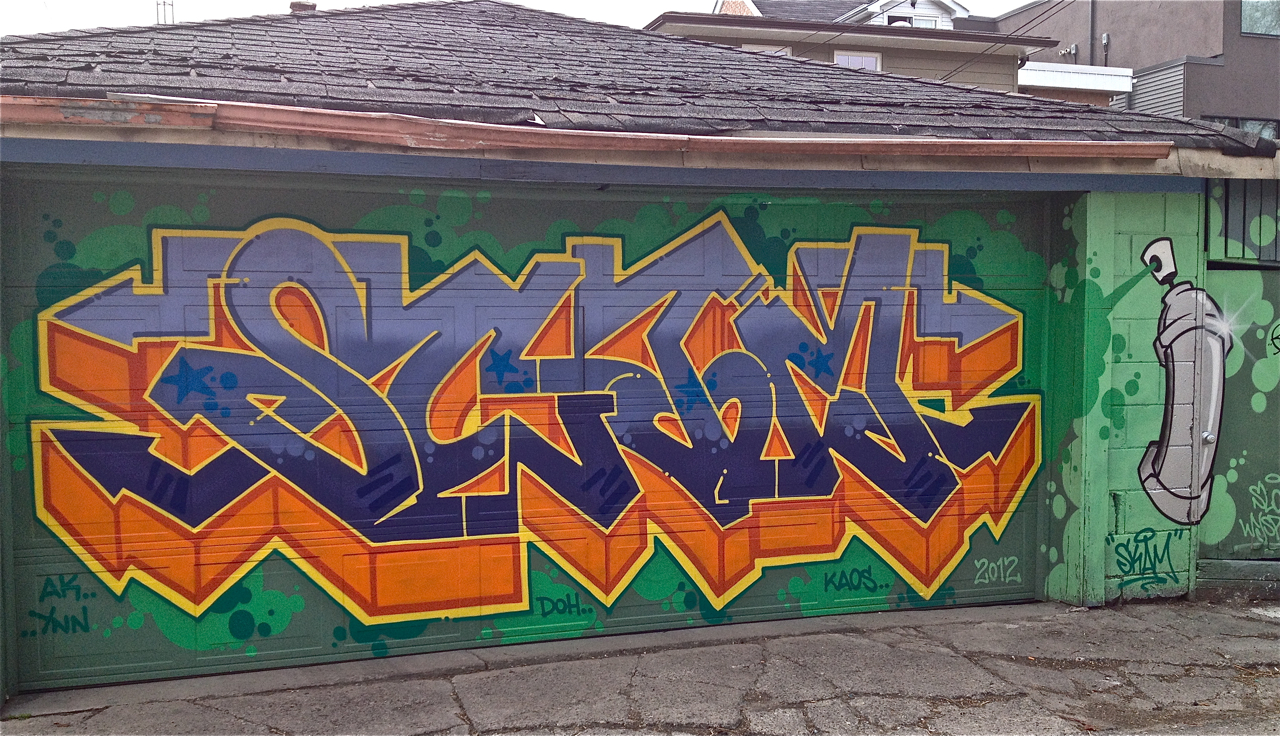

Tagging that is created on a canvas or other medium like a traditional artwork is known as graffiti art, but by nature, proper tagging is done illegally without permission. Common surface areas include city walls, storefronts, fences, subway cars, phone boxes, etc.

What Is the Process of Tagging?Īnd tagging and graffiti writings or drawings are created in public spaces, often on private or public property. Instead, it focuses on the challenge and risk associated with creating the tag in the hardest-to-reach or most daring public spaces. Tagging instead aims to promote the tagger’s reputation specifically within the tagging community. Unlike street art and some other forms of graffiti art, tagging was not created for a public audience or public enjoyment.

There is a sense of competition in tagging, and artists will try to outdo one another by tagging in unusual spaces or writing over each other’s works. These are all common forms of tagging that had been around for many decades before graffiti as we know it took off in the 1970s and 80s. Tags or names have been painted or scratched in public places for many centuries.Īnother example of widespread tagging is the practice of carving your name into a tree or onto your school desk, or writing a message on a toilet cubicle. There is evidence of ancient tagging on public buildings from ancient Rome and Greece, for example. Modern graffiti tagging may seem like a 20th-century pop culture phenomenon, but tagging has been around for centuries. People have long sought to leave their mark through forms of tagging. The tag itself is the artist’s signature, so they want their name or nom de plume to be recognized. Taggers are often anonymous, but they seek to be seen by the tagging community. Not everyone will recognize or appreciate the different tagging styles seen on the streets today or appreciate the great lengths some tag artists will go to to create them. Many people do not understand the point of tagging, and tags are often dismissed as vandalism. While tagging starts as a simple name, it often expands into graffiti with sharp political or societal commentary and can be said to “speak for the streets”. There is also a sense of rebellion and excitement that comes from tagging and doing something that can be both dangerous and illegal. There is motivation in the egotistical pleasure of leaving behind one’s name of legacy, be it a nom de guerre or tag. The earliest graffiti artists used tagging as a means of self-expression and usually one of the few means of expression available to disenfranchised urban youths. Graffiti artists, known as writers, are often misunderstood by society. Or, in the case of heaven spot tagging, the artist must reach a more challenging location to do their tag. These elevated and complex forms of tagging use more color depth and additional design features. Elevated forms of tagging include the graffiti styles known as Throw Ups, Blockbuster, Wildstyle, and Heaven or Heaven-spot graffiti. However, tags and tagging have become more sophisticated and expanded into more complex forms of graffiti and street art. A tag is usually drawn, sprayed, carved, or painted quickly and usually uses only a single color. Tagging is probably the most common form of graffiti and the original style of work.

Tagging describes the act of creating a tag, which is a type of signature or symbol that uses an artist’s name or a pseudonym. There are ten main types of graffiti common on the scene today, but none is more ubiquitous with the graffiti movement as the tag. Tagging was popular in urban American cities in the late 20th century before becoming popular worldwide. Tagging is a type of graffiti, and both are forms of contemporary street art. Tagging is one of the most recognizable and prevalent forms of graffiti art.


 0 kommentar(er)
0 kommentar(er)
